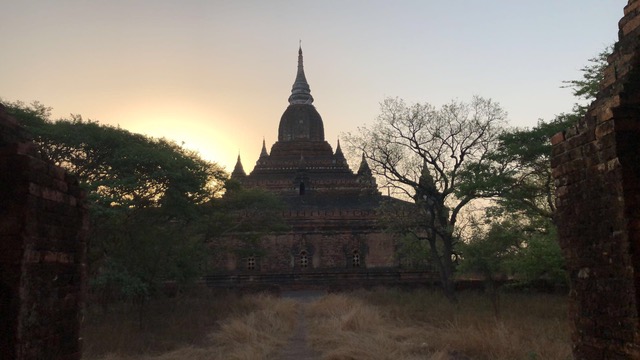Week Six: Back to Bagan
Week Six: Back to Bagan
This week I wrapped up my report on Chinese law and policy regarding investment in Myanmar’s SEZs. I will now focus on editing and preparing it for publishing before moving on to my next project. My previous report on Myanmar SEZs has still not been published because Open Development is going to have it translated to Burmese.
I only have a few major projects remaining: a report on ASEAN policy regarding Myanmar’s SEZs, a report about migration issues with SEZs, and profiles for all three SEZs. It is amazing to me that I am now well over half way done with my internship; I feel like I just arrived in Yangon.
I did not have a hostel reservation for Friday or Saturday night, so I decided to head back to Bagan to avoid the daily rain. The weather was perfect, and it made for a relaxing weekend away.
Chinese Policy:
My report on Chinese policy posed challenges because there is a general lack of information on the investment projects I researched. Most Chinese investment in Myanmar stems from China’s One Belt One Road Initiative and is focused on a trade corridor that leads to, and includes, the Kyauk Phyu Special Economic Zone (KPSEZ) seaport. Projects in this corridor involve complex negotiations between Myanmar and China that are largely kept under wraps by the Myanmar government. I was unable to find the text of the actual agreements anywhere, and the only information I could find on them was short articles that lacked many important details. It was hard to ascertain how many projects there are, where they’re located, or what they will cost.
There are many interesting issues that stem from this investment ranging from human rights to environmental concerns. First, there are concerns that people displaced from their land are not properly compensated, that they are not given proper notice, or that they are given no information at all. There are also environmental concerns that coincide with building rail lines through the mountainous terrain. These construction projects can lead to landslides and erosion that can threaten the lives of millions of people that live downhill from projects. Finally, there are concerns that financing these projects through China could lead Myanmar into a “debt trap” that could cause Myanmar to be overly dependent on China.
While those issues are incredibly interesting, my report focused instead simply on China’s policy, the scope of their investment in Myanmar, and its application to Myanmar’s SEZs. This report, like my report on Myanmar’s SEZs, will likely be translated to Burmese and will hopefully be published in the coming weeks.
Bagan Round Two:
This trip to Bagan was far more relaxing than my first. I rented an e-bike on Saturday morning to explore a couple sites that I was unable to get to during my first trip. Then, I spent most of my afternoon by the pool napping to catch up on the sleep I lost on the night bus, and I spent my evening reading. I woke up early on Sunday morning to watch the sunrise over the temples: an experience that I cannot recommend highly enough. The views are absolutely incredible, and pictures simply do not do them justice.

My biggest regret is that I was unable to watch the sunrise from a hot air balloon. It is easily one of the most popular tourist activities in Bagan, and from the pictures online, it is not hard to see why. However, the balloons only fly from October to April because it is too hot for them to fly around this time of year. Coming back watch the sunrise from a balloon is definitely on my bucket list.